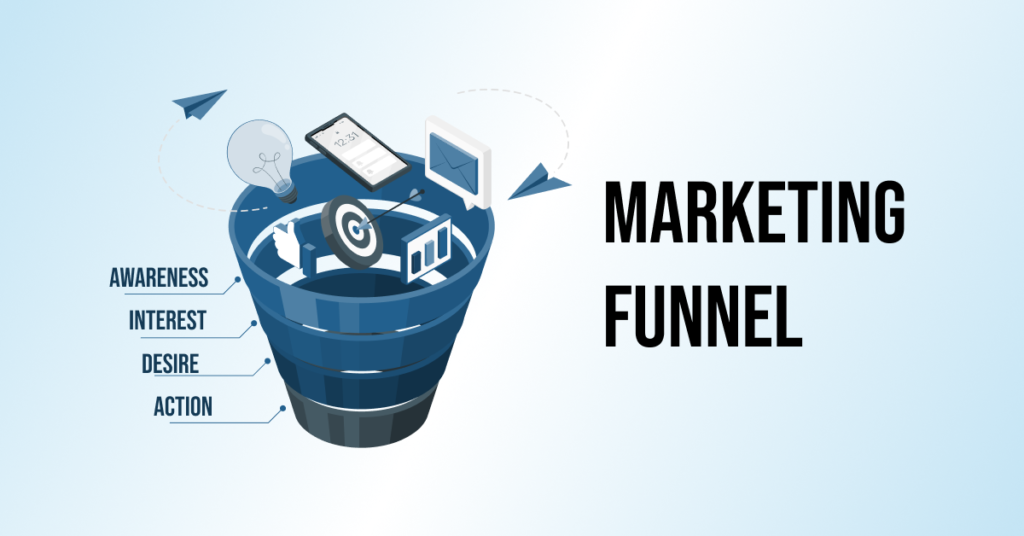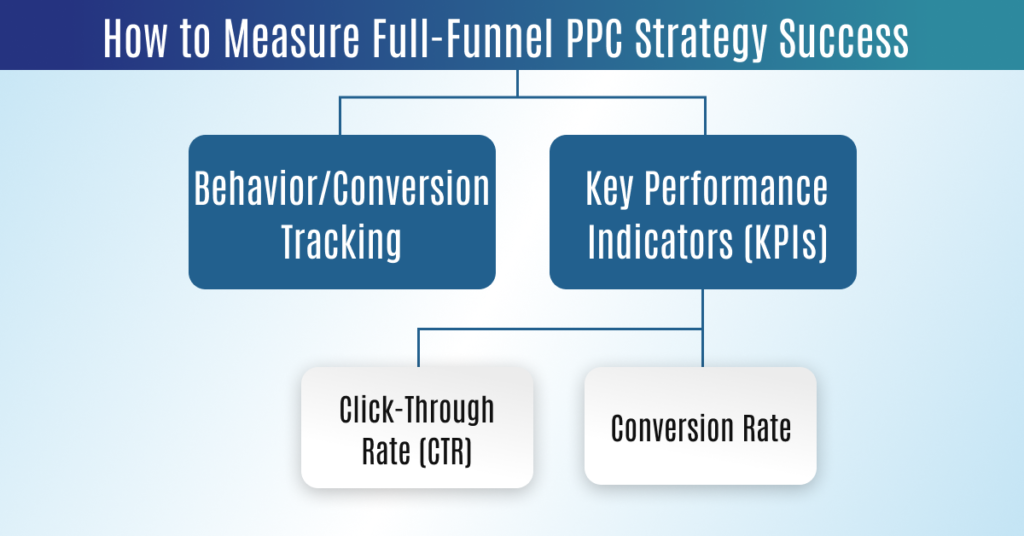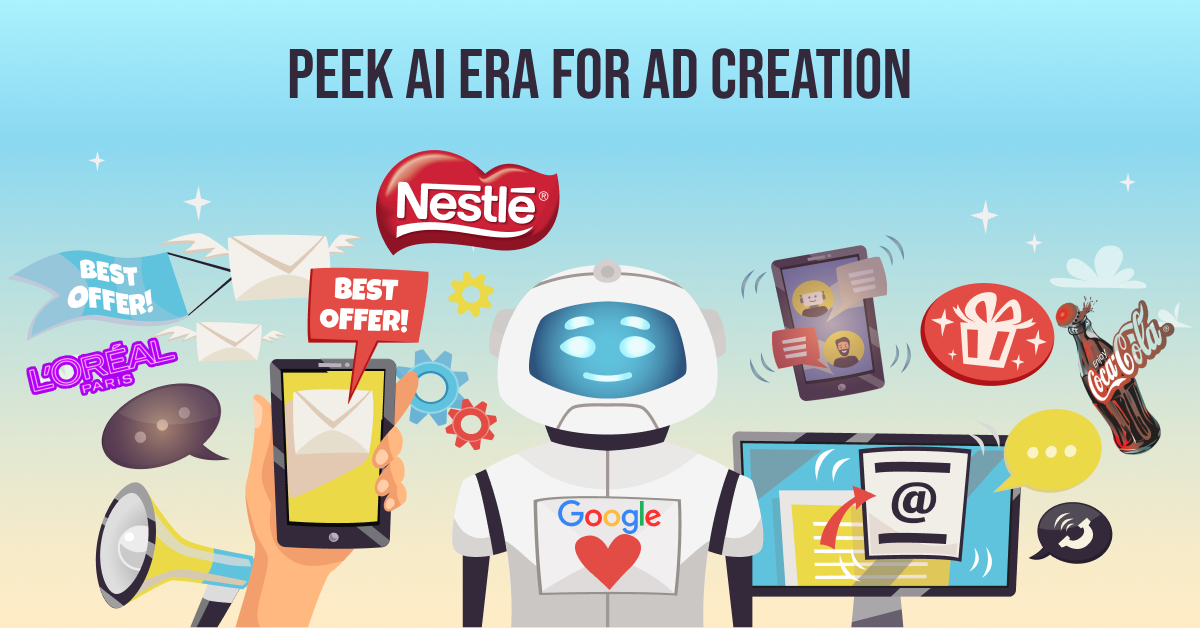How To Implement A Full-Funnel PPC Marketing Strategy

How To Implement A Full-Funnel PPC Marketing Strategy
-
By Shamsher Singh Bhullar
-
23rd April 2024
Pay-per-click (PPC) is a driving force in fetching results for all digital marketing efforts. It combines the input of keyword research, ad campaigns and landing page optimization to build a PPC strategy that yields tangible results.
The signs of having a foolproof PPC marketing strategy include a significant increase in the company’s revenue. This blog deciphers how to implement a solid PPC marketing strategy so that you can steal it for your business. Time to dive in.
What is a PPC Strategy?
A PPC marketing strategy involves leveraging ads to bring your results to the top of search engines such as Google. Imagine you work for a new business whose goal is to increase brand visibility.
The goal of a PPC strategy is to implement marketing tactics to navigate through customer journeys across the marketing funnel. In simple words, a PPC strategy could simply mean working on driving brand awareness through Google by targeting keywords that people actively search related to your product/service but are not yet aware of the solution or using social media marketing.
Now, let’s talk about an advanced full-funnel PPC strategy, which is a Google ad campaign. It involves creating a strategy for running paid ads for your brand for competitive keywords. It uses a bidding system for which you must be willing to pay the highest bid as well, i.e., cost per click (CPC).
Of course, you can’t outrank your competitors for every keyword. Therefore, you must deploy a smart PPC strategy, such as finding less competitive keywords with high volume to outbid your competitors.
Understanding the marketing funnel is pivotal to implementing a full-funnel PPC marketing strategy. Let’s define it!
What is Meant by Marketing Funnel?
A marketing funnel is a marketing model that depicts the customer journey before and after making a purchase. It is a multi-step process that highlights the stages of an individual looking for a solution, finding out about your brand, liking it or engaging with it, and finally, making a purchase.
Marketers and analysts often follow the AIDA marketing funnel model. This model stands for the following:
- Awareness
- Interest
- Desire
- Action

Let’s break down each of these stages of the marketing funnel.
1. Awareness
It is the first stage of the customer journey where your potential customer has not yet heard about your brand. He must be finding a solution to his problem but is not yet aware of your brand.
For example, if you run a shoe business with a USP of comfort and pain relief, you can target the following keywords:
‘Shoes for bunions’
‘Running shoes for men’
The first step is all about making individuals aware of your brand’s existence and the solutions it offers.
2. Interest
The next stage is when individuals start to show interest in your brand. Their actions include browsing through and interacting with the website, signing up for a newsletter, or following your social media handles, such as Instagram or Twitter.
This is the stage when you must make everything easy for users to navigate.
3. Desire
This is the stage of the PPC marketing funnel where individuals start to consider your product. They’d remember your product/service, compare it with other existing competitors, look for reviews and testimonials, browse social media via hashtags, or talk to their friends or family.
This step in the marketing funnel is also called the ‘consideration’ stage since your potential customers are exploring their options and considering you as one of them.
4. Action
The action stage is when your prospects are actually going to make a purchase from your website. This stage is also called the ‘conversion’ stage, as the prospect has finally been converted into your customer.
Your aim at this stage is to make it easy for the users to navigate through the website seamlessly and make a payment.
How to Implement Full-Funnel PPC Marketing Strategies?
Only when you’re aware of the marketing funnel and how it defines the entire customer journey can you apply a full-fledged PPC-integrated marketing strategy and tactics. To make it easy for you, we will take the shoe brand as an example.
Let’s split our strategy into three parts:
- Keyword research
- Ad campaign
- Landing page optimization
We’ll now apply these strategic steps in each stage of the marketing funnel.
1. Awareness Stage
As discussed earlier, the awareness stage is when prospects don’t know that your brand exists. Therefore, this is the stage where you need to create a strategy to capture prospects by offering your solution to their problem.
- Keyword Research
You must keep the following pointers in mind when implementing the keyword research strategy in the awareness stage:
- Handpick keywords that represent your brand and are in tune with what people are looking for.
- You can use keyword research tools, such as Google Keyword Planner, Ahrefs, or SEMrush, to make a list of keywords with tangible volume and minimal difficulty.
- You can use the following examples:
‘Sports shoes for running’
‘Shoes for jogging’

- Ad Campaign
You can use attractive images to indulge your potential customers in your ads. You can also leverage immersive videos to effectively present your brand’s value. It is also important to use an eye-catching headline in your ads to attract prospects.
- Landing Page Optimization
You must keep the following things in mind when implementing the landing page optimization strategy in the awareness stage of the marketing funnel:
- Your landing page must depict consistent branding. All the elements of the landing page should make the customer journey easier and prompt the users to engage with the website.
- It is always a great idea to link comprehensive and educational blog posts through the landing pages for enhanced user engagement. When the user extracts knowledge and information, he’ll automatically value your brand.
Adding call-to-actions (CTAs), such as ‘Learn More’ or ‘Download Free Guide’ will prompt the users to move further down the marketing funnel.
2. Interest and Desire Stage
Now that the customer has entered the market and is a potential customer, the goal of the interest and desire stage, also called the consideration stage, is to help individuals find the product-fit match. This means that the user is aware that your product/service exists but cannot find a suitable one for himself.
Customers desire to learn about your products and their use cases. To this end, you can encourage customers to sign up for newsletters, which will provide exclusive information and enticing discounts.
- Keyword Research
You must keep the following pointers in mind when implementing the keyword research strategy in the consideration stage:
1. At this stage, the user is looking at reviews and comparing your product; therefore, it is a smart practice to use keywords such as:
‘best shoes for running’
‘sports shoes comparison’
‘sports shoe reviews’
2. You can leverage tools such as SEMrush, Ahrefs, or Google Keyword Planner to get the list of keywords for the consideration stage.
- Ad Campaign
You must create ad copy that attracts the user to your brand. For instance, you can create an ad with the copy ‘durable long-distance trainers.’ This is how Asics is creating ad copies to sell its trainers.
Another significant full-funnel PPC marketing strategy is customer retargeting. When a customer visits your website once, you can utilize cookies to track the user’s activity and then retarget with ads on social media. This practice will psychologically prompt the user to make the purchase.
- Landing Page Optimization
It is important to remember the following PPC marketing strategies when optimizing the landing page for the consideration stage:
- At this stage, the landing page content must highlight user reviews, testimonials and case studies. A good tip is to add video reviews of your customers. This will enhance your website’s credibility.
- Call-to-actions (CTAs) can make or break the motive of your website’s landing page. Ensure that you use compelling CTAs such as ‘Sign Up for Newsletter’ or ‘Start Your Free Trial’ or ‘30-Days Refund Guaranteed’.
3. Action Stage
The action stage is the final stage and is also called the conversion stage. To give you a clear idea, the average e-commerce conversion rate is 2.5-3%. This means that only a tiny percentage of prospective customers convert, i.e., make a purchase.
The idea behind the complete PPC marketing funnel is to convert users into buying your product/service. If that doesn’t happen, the strategy has no point. Therefore, this final stage is the most crucial one.
- Keyword Research
You must follow the below-mentioned full-funnel PPC strategy for keywords dedicated to the conversion stage:
- The keywords for this stage must be transactional and/or commercial in nature. In other words, the CTAs must include the words ‘Buy’ or ‘Invest’ as a prompt for potential customers.
- You can use the following set of keywords for your landing page or blog posts:
‘Buy durable running shoes’
‘Invest in the right pair’
- Ad Campaign
The PPC marketing strategy for ad copies at this stage is to use clear-cut CTAs, such as ‘Buy Now’, ‘Request a Quote’, or ‘Find Your Fit Now.’ Usually, users add things to their cart but do not make a purchase. You can retarget them with carousel posts on social media with ‘Buy Now at [X]% off.’
- Landing Page Optimization
Your curated landing page must prompt the user to make a purchase. You must also add discounts and promotions on this page to lure users into making a positive decision. The page layout must be seamless and simple. Ensure that you remove distracting elements, such as the navigation bar from the conversion page. This practice will prompt users to make a purchase.
Another great tip is to keep the payment process easy. You must offer multiple payment options, such as PayPal, credit/debit card, or even third-party buy-now-pay-later options.
How to Measure the Effectiveness of PPC Marketing Strategy?
Once you’ve applied the full-funnel PPC marketing strategy and learned how to implement it, how do you make sure that the strategy is actually working? You do so by measuring the results. There are certain metrics to do so. This section of the PPC marketing strategy guide is dedicated to the metrics to measure the effectiveness of your strategies.

1. Behavior/Conversion Tracking
You can use Google Analytics tools to gauge how users interact with your website. You can also use heatmaps to understand the customer journey for your website via a user. The tool also allows you to drill down the user activities for various pages.
Another great tool is Google Tag Manager, which allows you to track conversions by depicting the user’s interaction with the website at every stage of the marketing funnel.
2. Key Performance Indicators (KPIs)
It is pivotal to monitor significant KPIs to measure the success of your full-funnel PPC marketing strategy. The following are the primary KPIs to track:
- Click-Through Rate (CTR)
The CTR metric tells you about the percentage of people who clicked on your ad. It depicts the total number of people who clicked on your ad out of all the impressions (people who saw your ad). This metric is a sign of ad relevancy to the users. It is calculated as follows:
CTR = Total number of impressions/Total number of clicks*100
Note: Create ads that are relevant to the users by using relevant keywords.
- Conversion Rate
Clicking on the ad is okay, but are users making a purchase? This is why the conversion rate is an important metric. It gives you a reality check. It gives you the percentage of people who clicked on your ad and performed the desired action.
The conversion rate can be calculated as follows:
Conversion Rate = Number of conversions/Total number of clicks*100
Other good metrics for measuring the success of full-funnel PPC strategies, such as quality score and cost-per-click (CPC), exist.
Bottom Line
Formulating a solid full-funnel PPC marketing strategy can help you gain traction in your company’s revenue growth. From examining the complete marketing funnel to knowing how to implement it to measuring the KPIs, the whole process aims at boosting your revenue. A pro tip is to tweak the strategies in the PPC marketing funnel to find the best fit for your brand.
If you’re looking for a partner to help you implement full-funnel PPC marketing strategies and generate tangible results, look no further than Deftsoft. Our team of experts is looking out for you. Reach out to know more!
FAQs:
What is a PPC funnel strategy?
A full-funnel PPC marketing strategy is a set of marketing tactics that businesses can deploy to prompt prospective customers to take a desired action. This action could be making a purchase or signing up for a newsletter. The strategy is built to make the customer journey easier throughout the marketing funnel, right from making potential customers aware of your brand to propelling them to make a purchase.
What is the best PPC marketing strategy?
It is important to grasp the eye of your potential customers right from the beginning. This is why you should leverage relevant long-tail keywords that users are searching for. You can find these keywords through different tools, such as Google Keyword Planner, Ahrefs, or SEMrush. You must also follow a holistic approach and maintain an active presence on social media.
Are Google ads enough for the PPC marketing strategy?
It is good to be prevalent on Google ads. However, a strong social media presence can expose your business to enhanced visibility and a large user base. Therefore, you must give equal attention to social media through ads, such as Facebook and Instagram ads.
What strategy should be followed for full-funnel PPC marketing campaigns?
You must implement three main strategies in each stage of the marketing funnel. These include relevant keyword research, relevant ad copies, and landing page optimization through CTAs.
What are the primary KPIs to measure the success of a PPC marketing strategy?
The primary KPIs for the success of a PPC marketing campaign include Click-Through Rate (CTR) and Conversion Rate. The CTR gives the percentage of individuals who clicked on your ad. The conversion rate refers to the percentage of users who performed the desired action after clicking your ad.

Shamsher Singh Bhullar
 23rd April 2024
23rd April 2024



